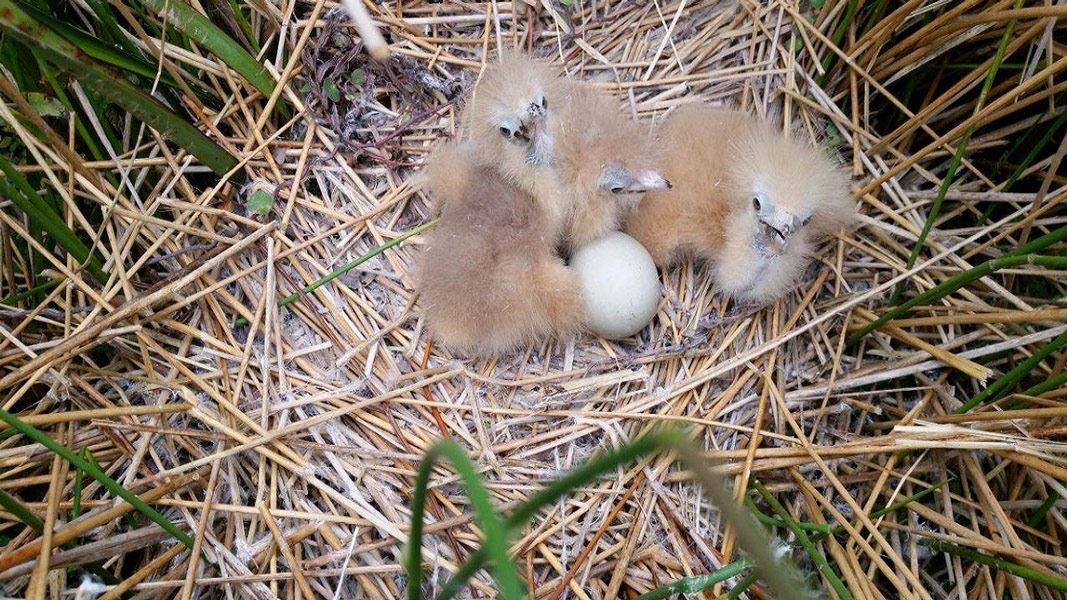Awarua-Waituna is one of New Zealand's largest remaining coastal wetland systems, encompassing a mix of coastal lagoons, freshwater swamps, extensive peatlands and estuaries.
Spread over 20,000 ha in Southland, Awarua-Waituna is one of five significant wetland sites in DOC's national Arawai Kākāriki wetlands restoration programme.
Awarua-Waituna provides habitats for an outstanding variety of rare flora and fauna and has been internationally recognised for its ecological values – in 1976 it was designated New Zealand’s first Ramsar site.
Image gallery
Ecosystems
The unique mix of wetland types that make up Awarua-Waituna are all maintained by different ecological processes, and provide homes to rare and threatened birds, fish, lizards, invertebrates and plant communities.
The Waituna Lagoon is one of the few mostly intact coastal lagoons remaining in New Zealand. Periodically open to the sea, its waters change from freshwater to estuarine in a dynamic system, providing an important habitat for plants, fish, and both native and migrating birds.
These precious ecosystems are threatened by land use intensification around the wetland, which has degraded habitats, modified water levels and reduced water quality.
Flora
The wetland supports an unusual array of plant communities. The area once supported extensive lowland podocarp forest, but this has been lost due to fire and human activities.
Now, the peatlands are dominated by wirerush (Empodisma minus), with tangle fern, swamp inaka (Dracophyllum oliverii) and manuka shrubland. The wetland is also home to hardy plants which usually only grow in subalpine conditions, like the cushion plant Donatia. Native orchids flourish throughout the wetland.
Macrophytes (aquatic plants), such as Ruppia megacarpa, are an intrinsic part of the lagoon, but are sensitive to changes in water quality. Ruppia can be used as an indicator of the health of the lagoon.
Fauna
A range of rare birds can be found around Awarua-Waituna. Elusive marsh and spotless crakes, godwits, Australasian bitterns/matuku-hūrepo and fernbirds live in the wetland. The extremely rare Southern New Zealand dotterel breeds on Stewart Island and migrates to the wetland during autumn and winter, and the smaller banded dotterel nests around the coast.
The wetland also attracts a wide range of trans-equatorial migrating and wading birds, including rare visitors to New Zealand like Siberian tattlers, greenshanks and sanderlings. Most migratory waders appear between October and March, though some of the more common species are present throughout the winter.
Waituna Lagoon is a hotspot for native long-fin eels and giant kōkopu, a threatened species from the Galaxiidae family, named for the distinctive galaxy patterns on their body. The wetland is an important spawning ground for a range of indigenous fish species such as inaka (whitebait), waikōura (freshwater crayfish) and kanakana (lamprey).
Three species of moth are found at Tiwai – the Tiwai Pimelea moth, the Tiwai Boulder Copper moth and the Cassanova moth.
History and culture
Awarua-Waituna is important to Ngāi Tahu due to their long occupation of the area and their relationship with the taonga species that are found there.
Nohoanga (settlements) were situated around Waituna Lagoon. Māori traditionally used the fertile wetlands as a source of food, especially kai moana from the lagoon. Harakeke, manuka, tōtara and pingao were also regularly harvested, and paru (black mud) was used to make dye.
The name Waituna means “water of eels,” named for the freshwater eels that are abundant in the streams above the lagoon. The original Māori name for the lagoon was Wai Perara, while Waituna was used for the main stream that feeds the lagoon.
Burial sites and other wāhi tapu (sacred places) along the shores of the lagoon mean the area is a focal point for Ngāi Tahu traditions. The area’s significance to Ngāi Tahu was recognised by a Statutory Acknowledgement under the Ngāi Tahu Claims Settlement Act 1998.
Today the lagoon and wetlands are a popular area for recreational hunting and fishing.
